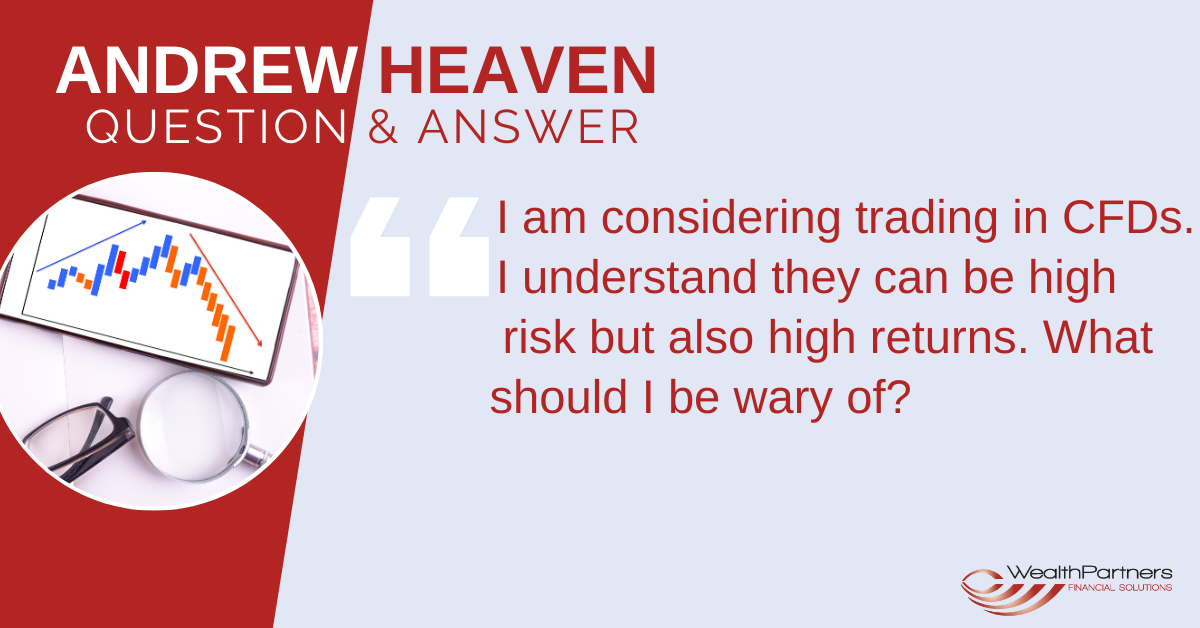Q: I am considering trading in CFDs. I understand they can be high risk but also high returns. What should I be wary of?
A: A CFD or Contract for difference is an agreement between two parties to access the movement in the price of shares, market indices, commodities, and currencies without owning the underlying investment. You share in the rise and fall of the value of the investment. Usually there are no restrictions to the upside or the downside fortunes of the contract.
Your exposure can be “long” where you benefit from the price moving up, or “short” where you benefit from the price falling.
The requirement to fund the exposure will vary depending on the contract entered into but could be around 1% of the market value. The leverage effects of this can be enormous in this example 100 to 1. For example, if you wanted exposure to $200,000 of an Australian Shares Index, the margin cost to fund that exposure would be $2,000. If the market was to rise 4% then you would profit by $8,000, but if the market fell by 8%, you would have lost $16,000 and you are liable to fund this loss.
There are a number of key costs you may face in trading CFDs: The commissions you pay your provider which is around 0.1% of the purchase price, usually with a minimum trade cost. The spread which is the difference between the buy and sell price; you enter a trade via a buy price and exit via a sell price. Your ongoing holding costs which is your trading position at the end of each day. Some providers may also charge for access to market data.
CFD providers advertise that you can manage risk by executing stop losses or auto sells at certain price points in the market. That is fine in theory provided you can afford the loss and the CFD provider can fulfill their obligations.
As with all structured products, futures and derivatives, you run the risk of counter party risk. Counterparty risk is the likelihood that one of those involved in a transaction might default on their contractual obligation. The collapse of Lehman Brothers during the Global Financial Crisis demonstrated that counterparty risk is a genuine consideration.
CFD’s have nothing to do with long term investing or arguably investing generally. Traders are “punting” on the rise and fall in the value of the underlying asset without owning that asset.
During the COVID crisis, the interest in trading CFDs has grown markedly. Applications for CFD accounts has grown at 3.4 times the normal rate.
CFD’s are not for the faint hearted but have been heavily promoted in Australia. Many would argue to an audience who should go nowhere near them. ASIC released data on trading results for retail “mum and dad” investors that should act as a sobering warning for those considering trading CFDs. In the week of 16 March to 22 March 2020, retail investors incurred net losses from trading CFD’s of $234 million.
CFD’s are sophisticated investment instruments that should only be used by experienced traders who know what they are doing and understand the risks and can absorb the cost of making the wrong trading investment decision.


